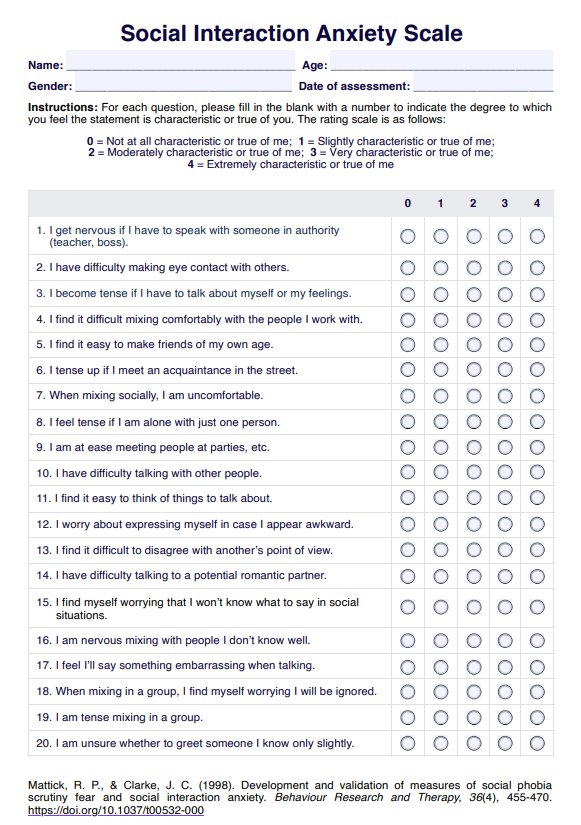Social anxiety can affect anyone, regardless of age, gender, or socioeconomic status. It typically starts during adolescence and, without treatment, can persist into adulthood. Risk factors include family history and environmental factors such as bullying or trauma.

Social Interaction Anxiety Scale
Access the Social Interaction Anxiety Scale to help diagnose and support clients experiencing social anxiety. Download a free PDF copy here.
Social Interaction Anxiety Scale Template
Commonly asked questions
Yes, self-help strategies can be effective in managing symptoms. These include lifestyle changes such as regular physical exercise, maintaining a healthy diet, regulating sleep patterns, practicing mindfulness, and engaging in positive self-talk.
They can conduct psychotherapy sessions focusing on exposure therapy or cognitive behavior therapy. Medication such as selective serotonin reuptake inhibitors and paroxetine might be prescribed, depending on the severity of the social anxiety.
EHR and practice management software
Get started for free
*No credit card required
Free
$0/usd
Unlimited clients
Telehealth
1GB of storage
Client portal text
Automated billing and online payments











